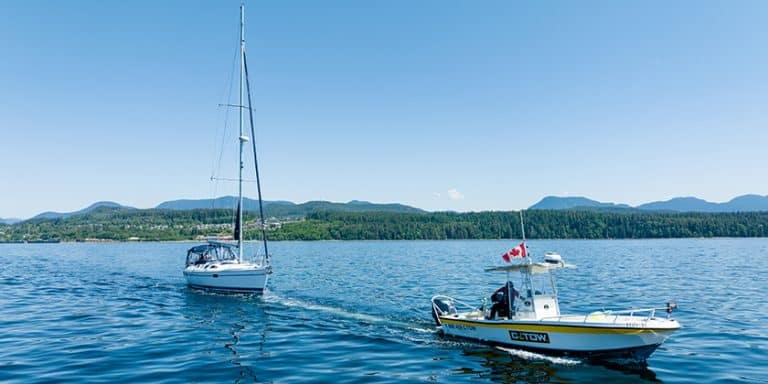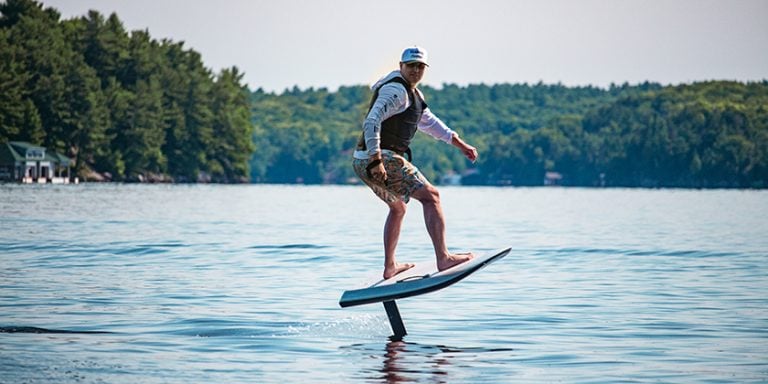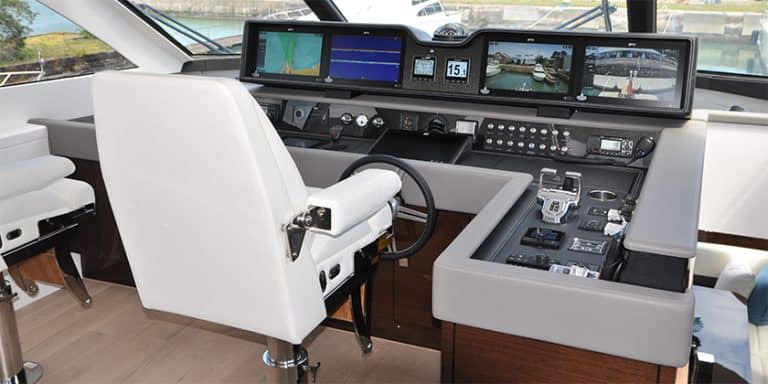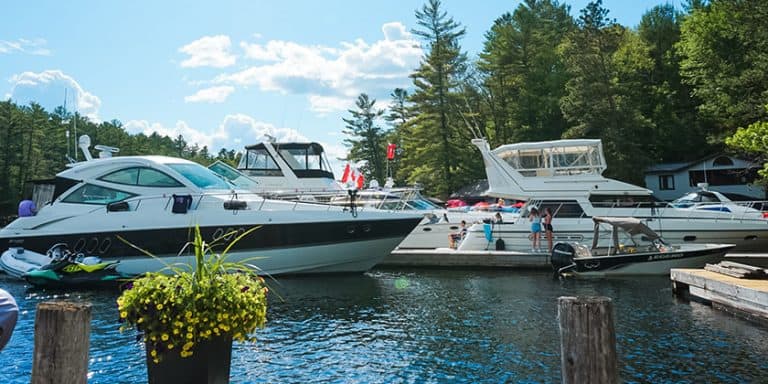Carver Marquis Plant Tour – July 2016
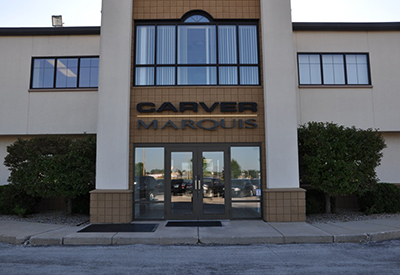
By Andy Adams
Last July, I had the pleasure of traveling to Wisconsin on behalf of Boating Industry Canada. I had been invited to take a plant tour of the Carver Marquis yacht building facilities. The company has introduced some important new manufacturing techniques and technologies that we were keen to see firsthand.
This was not my first trip to the Carver Marquis plant, but when I was last there, they were building models that have since been replaced with all new designs that are built using vacuum infusion process.
Many boat builders use open molding where the layers of fiberglass are put in one at a time and allowed to set up before the next layer is applied and rolled out. It’s a time-honored way of boat building but that doesn’t make it the best choice. Vacuum infusion involves applying the gelcoat to the mould, letting that set up and then laying in all of the fiberglass cloth and mat, and the reinforcing parts and cores, dry. Then an air tight plastic membrane is laid over, sealed around the edges with special sealing compound, and with the vacuum lines and resin feed lines attached, the dry fiberglass products are all resin infused at one time.
The advantages are significant although the complexity is much higher. In the hands of skilled and knowledgeable technicians, the finished product can potentially be both stronger and lighter by more precisely controlling the amount of resin to glass and also because the materials are all infused at one time, so there are no bonding issues between one layer and the next.
For the boat builders in the shop, the plastic membrane that allows them to create the vacuum between the membrane and the mold, also keeps many of the volatile organic compounds [VOCs] captured within the material itself, so the characteristic smell of the fiberglass shop is noticeably absent.
It’s a much more pleasant and cleaner working environment in the shop.
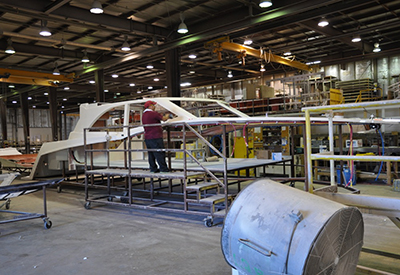
This is the hardtop and front deck for a 40 C Carver that is going into production. The part has been made with vacuum infusion process and is now being held in a steel assembly jig.
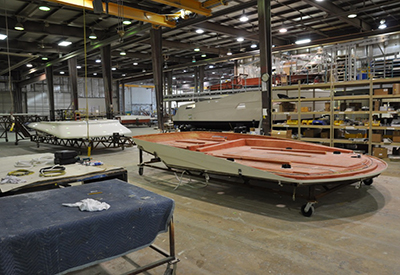
Upside down on a jig is a flying bridge with other pieces lined up so that they stacked together with the hardtop in the distance.
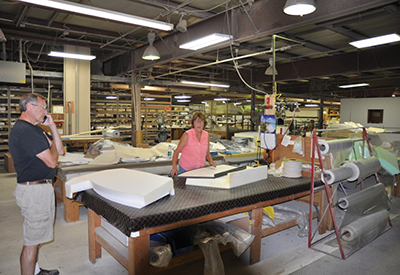
The company makes all of its own upholstery and seat cushions internally to control both production and quality.
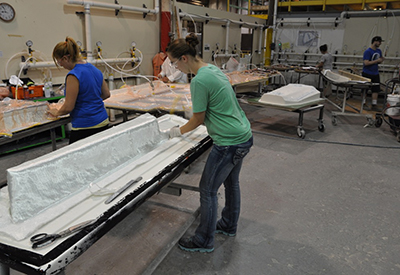
Dry fiberglass cloth is applied over the form that has been gelcoated before the resin infusion step. In this nice clean working environment, the glass layers are positioned with care.
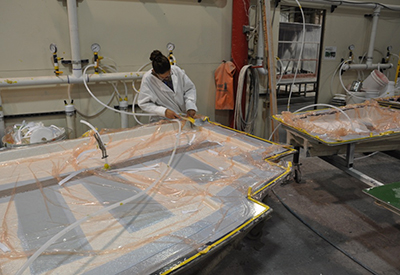
Here a large part is being prepared for vacuum infusion. Notice the yellow sealant around the edges and the plastic sheet. Vacuum lines are being added through the plastic at this stage.
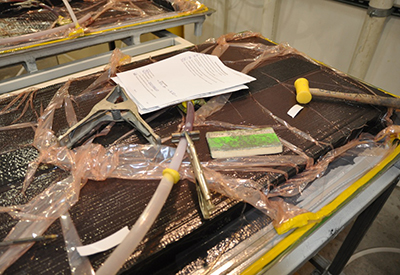
You can see from the look of the plastic membrane that the vacuum is sucking the materials down into the mould. The resin and vacuum lines have now been sealed off with clamps and the vacuum will be maintained for a time while the part cures.
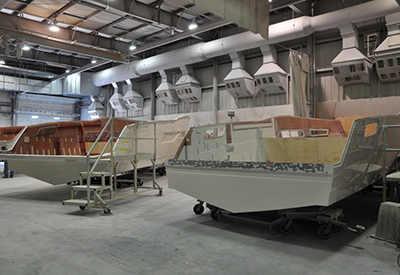
A pair 40 Carver hulls are waiting for further assembly.
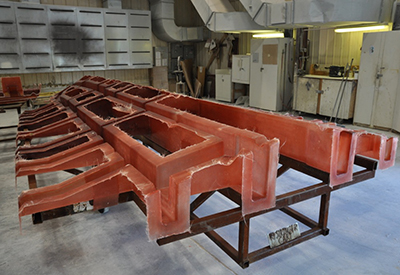
This is a fiberglass stringer system being held in position on a jig. These hat-section stringers will be turned over and carefully bonded into a hull part to provide strength and stiffness with low weight.
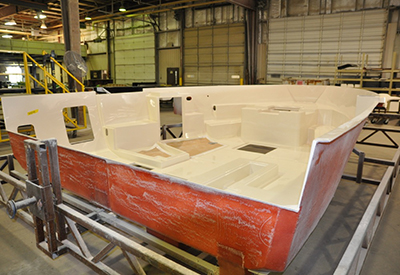
If you ever built model kits as a kid, you’ll realize that you can apply the same thinking to a 40 foot yacht. This is an interior liner section that will give additional strength, a low-maintenance gelcoat finished interior and includes precise and repeatable locations for interior bulkheads and cabinetry.
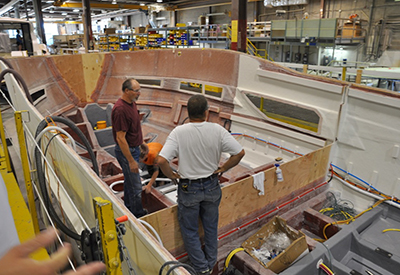
This shows some of the bulkheads being inserted, interior hull sections being finished with gelcoat for easy maintenance and the stringer system in position while workers install various mechanical systems.
Seeing it from the catwalk gives a better view of the interior of the Carver 40 coupe under construction.
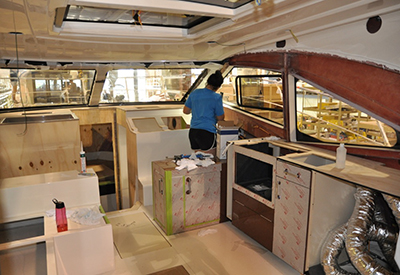
The woman in this picture is back-sealing the window glass during construction.
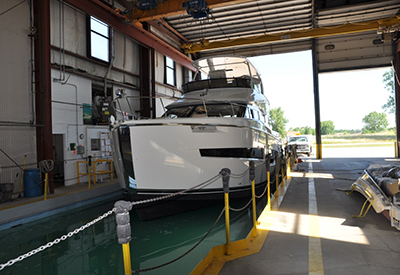
You can see how the very large and modern facility is bright and beautifully organized to turn out an elegant new yacht with quality and precision. Here we see a Carver 52 Command Bridge in the test tank where all the thru-hull fittings and systems are being checked before shipping.

